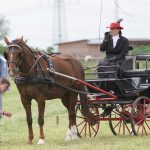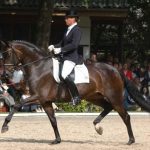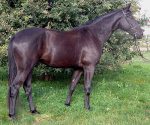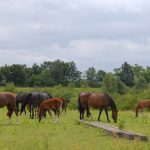Brandenburger Horse
The Brandenburger Horse is a breed of highly energetic, warm-blooded equines that developed through human interference in 15th century Germany. Known for their high energy, strength and working ability, these horses evolved as one of the favorite German breeds, and is still seen extensively in horse shows and other activities like riding and driving sports as well as in pleasure riding. They are suitable for slightly experienced owners.
Brandenburger Horse Pictures
- Brandenburg Horse
- Brandenburger Horse Images
- Brandenburger Horse Photos
- Brandenburger Horse Pictures
- Brandenburger Horse
- Brandenburger Horses
Quick Information
| Behavioral Characteristics | Noble, lively, willing, docile, slightly nervous |
| Physical Traits | Has a handsome and well-set head with a medium length back and a deep chest; the legs are thick and stocky while the hooves are strong and large; often have dark markings on the ankles and legs; at times carry a white marking on the forehead |
| Coat Colors | All solid colors (bay is most common) |
| Height/Size | 16-17.2 hands (adult) |
| Common Uses | Work, dressage, general riding, endurance |
| Health Problems | Generally healthy |
| Type | Sport horse, Show horse, Riding horse, Pleasure horse, Driving horse |
| Blood Type | Warm |
| Gaited | No |
| Ancestors (Bloodlines) | English Halfbred, Oldenburg, Asian horses, Thoroughbred, Hanoverian, Trakehner |
| Popular Traits | Well-balanced; multi-talented; relatively even-tempered compared to their large size |
| Feeding/Diet | General horse diet including hay, grass, grains, etc. |
| Country of Origin | Germany |
| Time of Development | 15th century |
| Stud/Registry/Association | The Brandenburg State Stud at Neustadt (Dosse) (English) |
Video: Brandenburger Horse Show
History and Development
In 1787, an initiative for breeding of a warmblood horse that would be light enough to pull carriages, and heavy enough to work, was undertaken. In 1788, King Frederick Wilhelm II founded the national and state stud of Neustadt/Dosse, and this stud had significant influence on the development of the Brandenburger horse.
The foundation for the Brandenburger began with English Halfbred, Oldenburg, Asian horses and Thoroughbred bloodlines. Hence, the bloodlines of these breeds were utilized to achieve the modern day Brandenburger horse. The result was a success. The influence of these breeds contributed to a strong and robustly-built sport horse that is desired all over the world.
After the World War II there was a significant advancement of mechanization, resulting in a diminution for the need for heavy warmblood horses.
In 1922, the Warmblood Breeding Society was founded for producing horses for farmers and agricultural work. Keeping this trait in mind, the blood of the Hanovarian breed was also used to improve the stock.
In 1999, 1,927 registered broodmares and 76 sires encompassed the breeding stock at the Neustadt/Dosse state stud, which was the breeding centre. Each year in October, it is this state stud where the approval of the stallions takes place.
Interesting Facts
- A Brandenburger mare named Poetin proved to be a successful dressage horse, and it was sold at an auction house for a record amount 2.5 million Euros.









